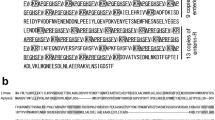Abstract
Glutamate-induced responses in the procerebral neurons of the terrestrial slug Limax marginatus were examined using the nystatin-perforated patch recording technique applied in the voltage-clamp mode and local application of drugs. The procerebrum contains two types of interneurons with different spontaneous activities, bursting and nonbursting neurons. In the bursting neurons, a puff of glutamate evoked a rapidly desensitizing current followed by a smaller sustained current. The reversal potential of the early component showed that the current was mediated by Cl− ions, while the late component was presumed to be mediated by K+ ions. In the nonbursting neurons, glutamate evoked a sustained current with a strong outward rectification, and the current was mediated by K+ ions. Ibotenate selectively evoked the rapidly desensitizing response in the bursting neurons, whereas quisqualate evoked a non-desensitizing K+ current both in the bursting and nonbursting neurons. The glutamate-induced K+ current had similar characteristics with the spontaneous synaptic activities in the procerebrum neurons, suggesting the possibility that glutamate receptors are involved in the spontaneous oscillatory activity.
Similar content being viewed by others
Author information
Authors and Affiliations
Additional information
Accepted: 10 February 1999
Rights and permissions
About this article
Cite this article
Watanabe, S., Kawahara, S. & Kirino, Y. Glutamate induces Cl− and K+ currents in the olfactory interneurons of a terrestrial slug. J Comp Physiol A 184, 553–562 (1999). https://doi.org/10.1007/s003590050355
Issue Date:
DOI: https://doi.org/10.1007/s003590050355




